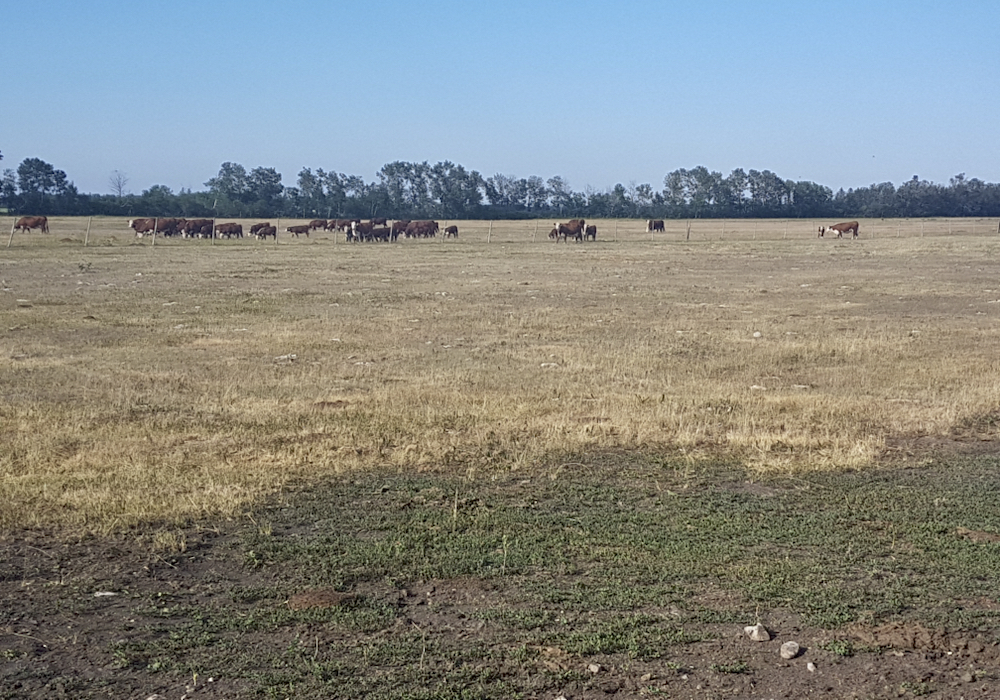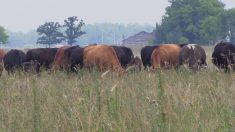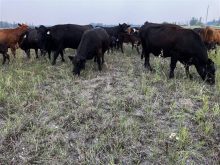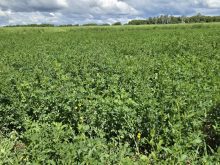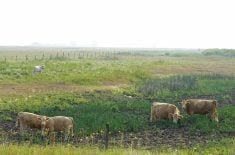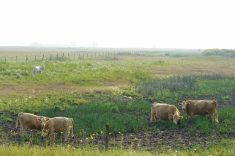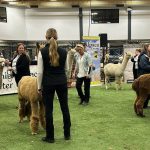Livestock producers hoping to tap AgriRecovery will now be able to claim things like land rentals, fencing or costs for hauling water or harvesting extra forage acres during last year’s drought.
The province and federal government announced the expanded Livestock Feed and Transportation Drought Assistance program Feb. 2.
Elk producers are now also able to apply for aid for their breeding stock. The original form of the program included only breeding animals of beef or dairy cattle, horses for PMU, sheep, goats or bison.
Read Also
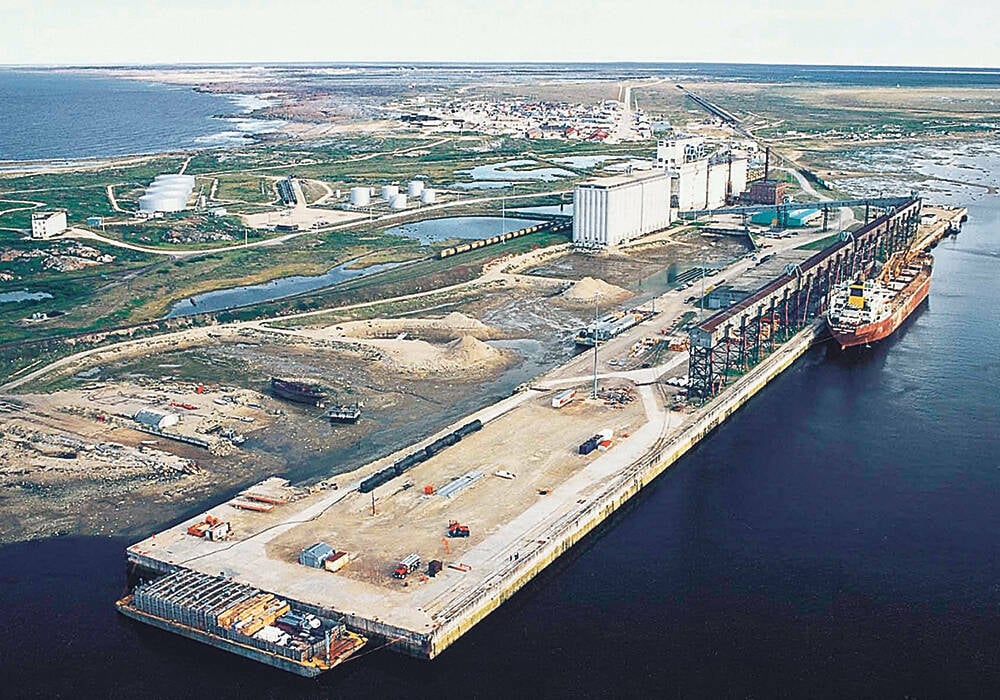
Port of Churchill revamp gathers pace
Canada’s Port of Churchill Plus update plan hopes to expand trade, including agriculture trade, at Manitoba’s Arctic sea port
“It’s definitely a positive development,” Manitoba Beef Producers (MBP) general manager Carson Callum said.
The original form of the program allowed producers to be reimbursed for buying feed, testing feed or transporting feed.
The expansion ticks a line item off the wish list for MBP. The producer group welcomed the initial AgriRecovery announcements in the latter half of 2021, but had also pushed for the province to expand the list of eligible costs.
“MBP has been advocating since the onset of the program for recognition of some of these other extraordinary expenses that weren’t included in the feed assistance component, so we’re very happy to see that the program has now been expanded to include some of those expenses and thank the provincial and federal governments for moving this forward,” Callum said.
Callum said he expects the expanded program will ease some financial sting for producers, some of whom have lamented the program’s $50-per-head producer share.
The feed and transportation program lays out a $50-per-head payment for elk, bison and cattle and a $10-per-head producer share for sheep and goats.
Under the program, producers can apply for 75 per cent of eligible costs (the sum of their feed and transport invoices and any extraordinary expense claims, less the per-head producer’s share), to a maximum of $250 a head for larger livestock, and $50 per head for sheep and goats.
Beef producers complained that per-head producer responsibility would eat up most of their aid request under the original list of eligible expenses, Callum said.
“With this particular expansion and being able to claim some of those other extraordinary expenses such as labour for those extra acres you might have harvested or in the ditches or in the bottom of the lake bed — something of that nature — it’ll allow for a bit more support in the program and allow you to get past that $50,” he said.
Extra land rentals for feed production, fencing supplies, custom water hauling or other water purchase, transportation of feed produced by the farmer for eligible livestock or feed harvest costs on land not typically used for feed are among the newly eligible costs.
According to materials published by the province, that list includes hired labour and fuel for either hauling water or harvesting feed on non-typical land with the farmer’s own equipment, or custom labour costs for the same. The province cautioned, however, that those costs should be associated only with feed and water for eligible livestock, not market animals.
The program will not require producers to submit invoices for those extraordinary expenses, although producers should keep those records in case of an audit.
Producers will also have a per-head cap on those expense claims. Cattle, elk and bison producers can claim up to $133.33 per head for extraordinary expenses, while the cap for sheep and goats sits at $26.66 per head.
Manitoba Agriculture Minister Derek Johnson said the provincial Ag Department has been working with its federal counterparts to get program changes into place as quickly as possible, adding that, as both a federally and provincially funded program, proposed changes take some time to come through.
“When the farmers come forward with concerns, we’ve been very responsive and we continue to collaborate and listen to our producers,” he said.
“You can have a program, but if there’s no uptake on it, there’s no real point in having it,” he added.
Uptake
Johnson said that AgriRecovery uptick has significantly picked up as producers start to collect their invoices and eligible costs.
Both MBP and the province had previously noted that extended grazing in fall 2021 may have slowed applications as producers reassessed feed supplies.
The program had seen about 1,200 applications as of Feb. 2. In comparison, the province reported 263 applications, worth $3.87 million, as of Nov. 19.
“Just in the last couple of days, we’re getting an additional 10 per cent per day that are coming in,” Johnson said.
The province and federal government have committed a joint $155 million, to be split between the province’s three AgriRecovery programs. On Aug. 31, 2021, the province unveiled the first two of those programs, both oriented around immediate feed need. The Livestock Feed and Transportation Drought Assistance program covers aid for producers to purchase and transport feed to herds, while the Livestock Transportation Drought Assistance program is focused on cases where animals were transported to feed. Details of a third and final offering, the Herd Management Drought Assistance program, were announced Nov. 30, 2021 — with an eye to replacing breeding stock lost during the 2021 drought.
The third program has garnered interest, Johnson said, although with application packages just released, requests for aid have so far come from the two more immediate programs.
Johnson said the distribution of that $155 million across the three programs will be “whatever the producers need.”
“Our goal is to spend all the money,” he said.
Johnson also did not close the door to future program changes.
“We’re always a listening government. If there are more concerns that are brought forward, we’ll always take them into consideration,” he said, adding that “obviously, not absolutely everything is feasible.”
Manitoba’s horse breeders have previously expressed a desire to also be included under the program.
Producers still have several months to accrue eligible feed and transportation costs, and weeks more to finalize their application. Costs between June 1 of last year and March 15, 2022, are eligible under the Livestock Feed and Transportation Drought Assistance program, while producers can count breeding stock transportation costs between Aug. 1, 2021 and the end of June this year. Producers then have until April 15 or July 30, respectively, to complete their aid applications for those programs.


